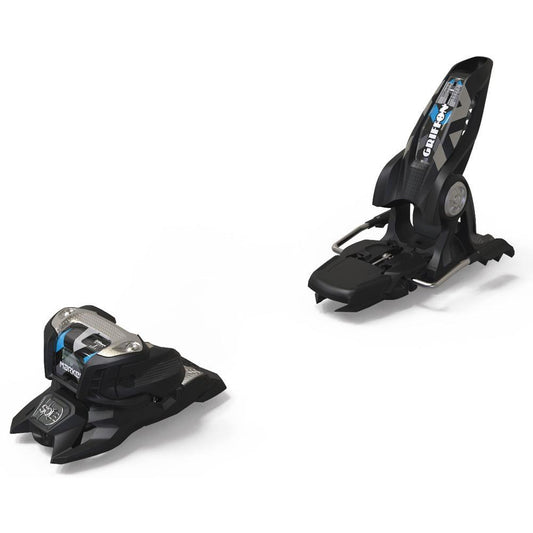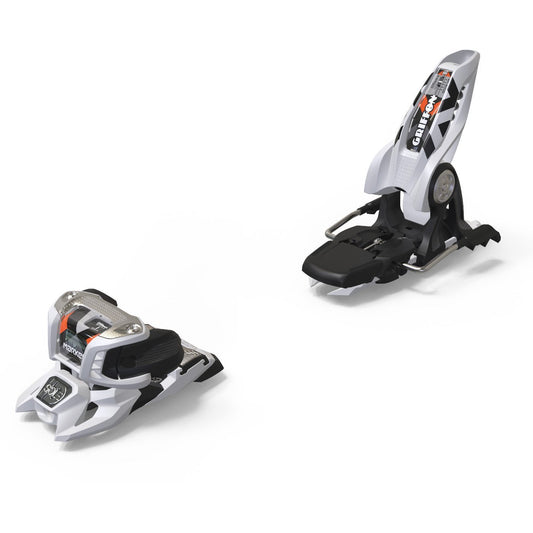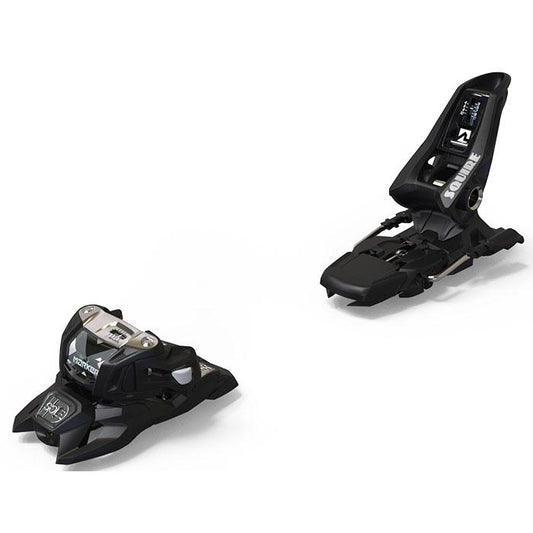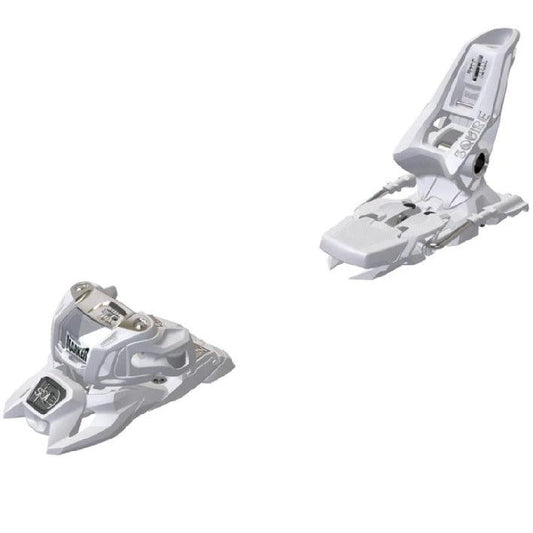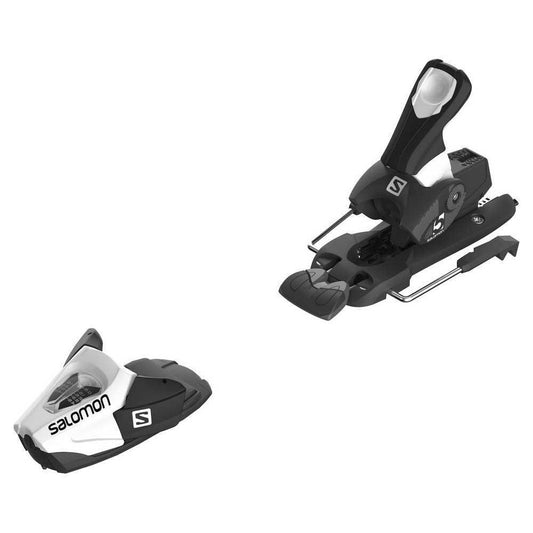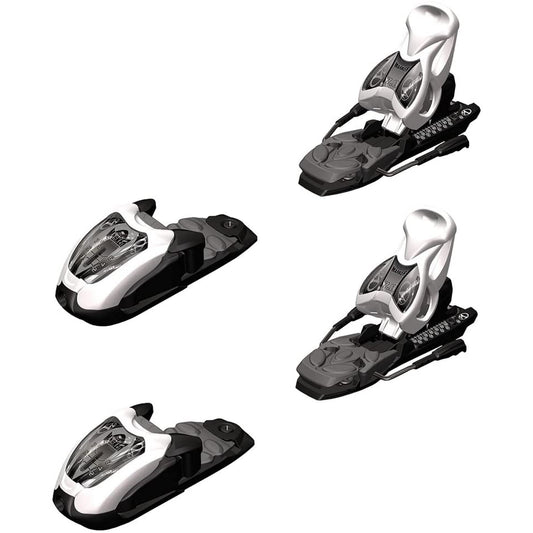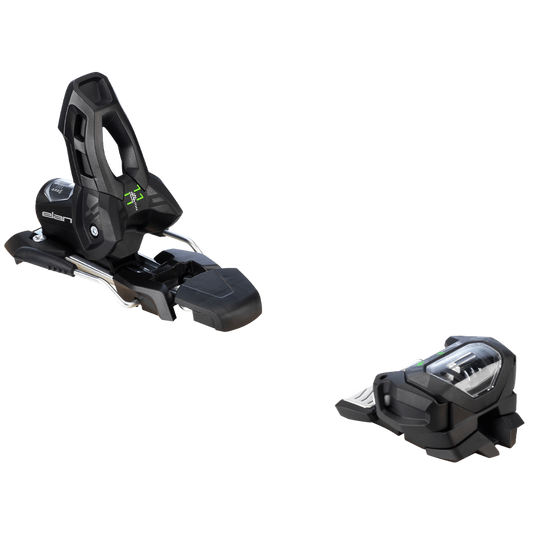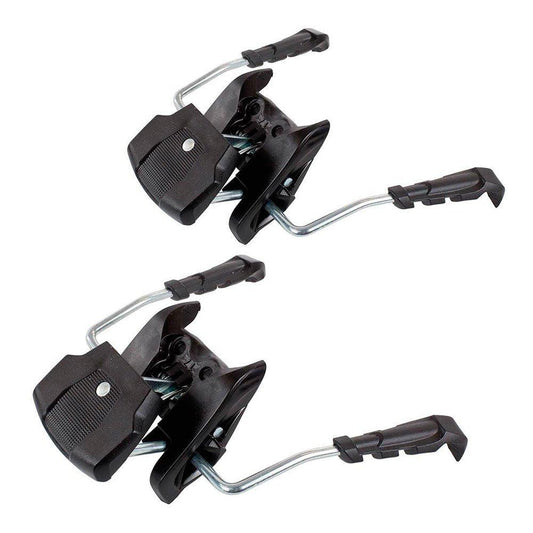
Collection: Snow Ski Bindings
-
Marker Griffon 13.0 Ski Binding
Regular price $435.00 AUDRegular priceUnit price / per- $435.00
- $435.00
-
Marker Squire 11 Snow Ski Bindings - 90mm
Regular price $289.00 AUDRegular priceUnit price / per- $289.00
- $289.00
- $289.00
-
Salomon N C5 J85 Snowskis Bindings - Kids
Regular price $120.00 AUDRegular priceUnit price / per- $120.00
-
Marker M 7.0 EPS Snowski Bindings
Regular price $139.95 AUDRegular priceUnit price / per- $139.95
-
Elan Attack 11GW W/O Brake Snow Ski Bindings
Regular price $299.99 AUDRegular priceUnit price / per- $299.99
-
Elan Attack 14 MN W/O Brake Snow Ski Bindings
Regular price $399.99 AUDRegular priceUnit price / per- $399.99
-
Elan Power Brake Race Pro 95
Regular price $59.99 AUDRegular priceUnit price / per- $59.99
FAQs
What are the different types of ski binding?
1. Alpine Ski Bindings (Downhill Bindings)
• Purpose: These are the most common bindings, designed for downhill skiing.
• How they work: They typically feature a toe and heel piece that securely holds the boot in place.
• Release Mechanism: The binding has a release mechanism in the event of a fall or crash, which helps prevent injury by releasing the boot from the ski.
• Varieties: There are different DIN settings (release settings) based on skier's weight, height, and ability level.
2. Alpine Touring (AT) Bindings
• Purpose: Designed for backcountry skiing, where skiers climb uphill and then ski downhill.
• How they work: These bindings allow the heel to lift, making it easier to walk or climb uphill. Once at the top, the heel is locked down for downhill skiing.
• Varieties: There are two main types of AT bindings:
‣ Tech Bindings: Lighter, with pins that lock into the boot's toe.
‣ Frame Bindings: Heavier, with a full frame for both uphill and downhill sections.
‣ Hybrid Bindings: Combines the capabilitys of an alpine and tech binding by offering a full toe piece for resort skiing.
When should you replace ski bindings?
Replacing ski bindings is important for safety and performance. Here are some key signs and guidelines for when to replace them:
1. When Bindings Show Signs of Wear and Tear
• Cracks or Damage: If the plastic or metal parts of the bindings are cracked, chipped, or visibly damaged, they should be replaced. Any structural damage could compromise the binding's ability to hold your boots securely.
• Loose or Worn-Out Parts: Over time, screws, springs, and other components of the binding can wear out. If any parts are loose, missing, or corroded, it's time for a replacement.
2. When Bindings Fail to Release Properly
• Incorrect Release Mechanism: If the bindings fail to release when they should (e.g., during a fall), or if they release too easily, they should be inspected and replaced. A properly functioning release mechanism is essential to reduce the risk of injury.
• Poor DIN Settings: If your bindings can no longer adjust properly to your weight, skiing style, or ability level, they might not be providing the correct release force. It's important to have the bindings checked by a professional and replaced if needed.
3. If Bindings are Over 10 Years Old
• Age of Bindings: Ski bindings typically have a lifespan of about 10 years. After this period, the materials and springs inside the bindings may degrade, affecting their performance. Even if they appear to be in good condition, older bindings may not meet modern safety standards.
• Manufacturer Guidelines: Always check the manufacturer’s recommendations on the lifespan of your bindings. Some brands might have specific suggestions for when to replace them based on model and year.
4. When Upgrading Your Skis
• New Skis, New Bindings: If you're purchasing a new pair of skis, it may be time to consider replacing your bindings to ensure compatibility, safety, and performance. Old bindings may not work properly with new ski designs or technology.
• New Skiing Style or Ability Level: If you’re progressing in your skiing ability or changing your style (e.g., moving from recreational to more aggressive skiing), you might need new bindings with a higher DIN setting or features suited to your new needs.
5. If Bindings Are No Longer Compatible with Your Boots
• Boot-Binding Compatibility: Ski boots evolve over time, with different sole types (e.g., GripWalk, Alpine Touring, etc.). If your boots are no longer compatible with your bindings, it’s necessary to replace the bindings to ensure proper function and safety.
• Different Binding Types: If you've changed to a different type of ski (e.g., alpine touring skis, freestyle skis), the old bindings may not be suitable for the new setup.
If you are concerned about your bindings, bring them in store for one of our seasoned staff to inspect!
How do ski bindings work?
Ski bindings play a critical role in connecting the skier's boots to the skis while ensuring safety, control, and comfort. Here's how they work:
1. Securing the Boot to the Ski
• Boot Interface: Ski bindings consist of two primary parts—the toe piece and the heel piece. The toe piece grips the front of the boot, and the heel piece secures the back of the boot.
• Attachment: The boot is held in place by the bindings, which are mounted to the ski. These parts are designed to keep the boot firmly attached to the ski during normal skiing motions while still allowing for controlled release during a fall or impact.
2. Allowing for Skiing Movements
• Downhill Skiing: Ski bindings allow for a skier's normal movements, such as flexing the legs, turning, and applying pressure to the skis. They ensure that the skier can control the skis through the boots.
• Flexibility and Stability: While skiing, the bindings provide the stability needed to stay connected to the skis, but also allow the skier to move their legs freely. For example, bindings allow the skier to apply edge control during turns while maintaining a secure connection.
3. Release Mechanism (Safety Feature)
• Why It Matters: Ski bindings have a built-in release mechanism designed to prevent injury by releasing the skier’s boot from the ski during a fall or sudden impact. This is crucial in avoiding injuries, especially to the knee and legs.
• DIN Setting: The release force is set using a system called the DIN (Deutsches Institut für Normung) setting. This setting determines how easily the bindings will release under force. The DIN setting is based on factors like the skier's weight, height, ability, boot type, and skiing style.
• Toe and Heel Release: The binding has release mechanisms in both the toe and heel sections. If the skier falls or experiences a sudden jolt (like hitting a rock), the binding will release the boot to reduce the risk of injury. This is particularly important for reducing the chance of knee or leg injuries during high-speed falls.

